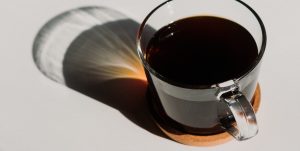Lattes taste like heaven in a cup. However, is a latte hot? When you investigate this, you find that the temperature of a latte depends on two things: the espresso and the milk. The temperature of your lattes will also vary based on whether they’re being served in a cafe, at home, or if they’re going to go.
Contents
Is a Latte Hot?
A latte is hot because it is served at 160 degrees Fahrenheit. This temperature is just a little cooler than coffee’s boiling point, so you can drink a latte without burning your mouth. You can also choose a warm latte. There is nothing wrong with that.
- Latte temperature is important because it affects the taste of your drink
- The higher the temperature of your latte, the bitter it will taste
- The temperature of a latte also depends on the type of coffee roast used
- Lighter roasts tend to taste better when served hotter than darker roasts, which may taste better at cooler temperatures

Milk Temperature for Latte
The milk should be at least 120 degrees Fahrenheit when you pour it into the espresso shot to get the ideal foam consistency. The foam will be thin and flat if your milk is too cold. The milk will separate from the espresso shot if it is too hot.
The best way to keep your milk hot at home is by using an electric milk frother. This device heats milk so that you don’t have to wait for it to cool down before adding it to your coffee. If you’re not using this piece of equipment, you will inevitably serve lattes at 150 degrees Fahrenheit or less.
Coffee Temperature for Latte
You can brew an espresso shot to whatever temperature you like (depending on personal preference). However, I recommend brewing it at around 200 Fahrenheit degrees. You will get the best taste from your espresso machine at this temperature.
If your espresso machine doesn’t have a built-in thermometer, I recommend using an instant-read thermometer.
The Temperature of Lattes in Cafes
Lattes in cafes are served at 165 degrees Fahrenheit. At this temperature, coffee shops expect you to enjoy your coffee over time and not chug it down immediately. Higher temperatures could increase your risk for esophageal cancer, while lower temperatures can sabotage the flavor.
The Temperature of Lattes to Go
Lattes to go are served at 160 degrees because it is the perfect temperature to brew a good cup of coffee. It’s not too hot, and it’s not cold either.
The reason is that baristas want to make sure that both optimal flavor and aroma get extracted from the coffee grounds.
It’s also important to mention that if you want to drink your latte in a cup made out of porcelain or ceramic, you should get one designed specifically for hot drinks (this will also help keep your drink warm longer).
Temperature Effects on Espresso
Espresso boils at a temperature between 195 and 200 degrees Fahrenheit. This ensures that the water extracts all of the flavors from the coffee grounds in exactly the right way.
As it cools down after being brewed, espresso can become bitter tasting due to the extraction process breaking down some of the flavor compounds in the coffee bean into other compounds that don’t taste great!
Temperature Effects on Milk
High temperatures of 120 to 160 Fahrenheit melt any fat in milk so that it blends easily with watery espresso without separating it into pure cream.
The temperature of the milk will affect the texture of each drink. Milk that is too hot can curdle, making it unpleasant to drink. Milk that is too cold will not provide the same creamy texture as hot milk and may also affect the espresso taste.

Related Questions
How Do You Warm Milk to 120 Degrees Fahrenheit?
The easiest way to warm milk to 120 degrees Fahrenheit is to heat it in a small saucepan over low heat. Make sure the pan is deep enough so that when the milk comes to a boil, it doesn’t overflow. Stir constantly, so the milk doesn’t burn on the bottom of the pan. Let it sit for about 10 seconds after boiling, and then remove from heat. The temperature should be around 120 degrees Fahrenheit.
How Do You Keep a Latte Warm?
To keep your latte warm as long as possible, use an insulated travel mug with a lid that fits tightly against its opening. This will help prevent any condensation from forming on your cup’s walls (which could drip down into your drink).
For best results, choose a mug that holds about 12 ounces of liquid (or more) so that there isn’t much space inside. This helps prevent heat loss through convection currents of air surrounding the liquid surface.
Conclusion
Is a latte hot? Yes, a latte is hot. A latte is made of steamed milk and espresso. The espresso is brewed to the standard temperature of 195 to 200 degrees Fahrenheit. The steamed milk will typically be at 120 degrees F. For that reason, you can expect your latte to be hot at about 165 degrees Fahrenheit.



